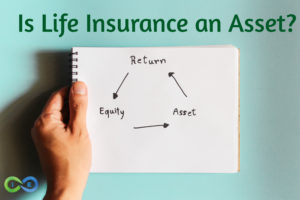Variable life insurance (VLI) is a type of life insurance policy that, like all policies of this type, features a death benefit and is guaranteed to remain in force as long as you make premium payments. Variable life insurance also has a cash value account but, unlike traditional permanent life policies such as whole life insurance, funds in the cash account can be invested in sub-accounts designed to provide performance similar to mutual funds.
Variable Life Insurance vs Variable Universal Life Insurance
The following is a snapshot of the similarities and differences of variable life insurance and variable universal life insurance.
Variable Life Insurance:
VLI offers a steady premium and a guaranteed minimum death benefit. However, the growth potential of your cash value depends on how well your chosen investments perform within the separate account.
Variable Universal Life Insurance:
Variable universal life insurance combines the investment choice freedom of variable life with the adaptable premiums and death benefit options of universal life. It allows you the flexibility to adjust your premiums and possibly even skip payments if your cash value flourishes. A typical VUL insurance policy offers 20 to 30 or so investment sub-account options, which might track an index such as the S&P 500 or invest in securities such as small-cap stocks, international stocks, bonds, etc.
Investment-Linked Cash Value:
Unlike traditional policies where your cash values are safe in the insurer’s general account, with variable life insurance, your money is divvied into separate accounts, often tied to the ups and downs of mutual funds or the stock market. This approach could lead to higher gains, but remember, it also invites more risk.
Risk and Responsibility:
In the realm of variable policies, the financial risk of how your cash value fares in the market rests squarely on your shoulders. The insurance company won’t guarantee the investment performance, making it a path of potential high rewards shadowed by risks.
Regulation and Licensing:
To offer variable life products, you need more than just a life insurance license; a securities license is also necessary due to the investment element.
Suitability and Financial Planning:
Variable life insurance and variable universal life are for those who can handle volatility and investment risk for potentially higher returns. When considering variable life insurance, you must evaluate your risk tolerance and long-term financial aspirations.
VLI and VUL Subaccounts
Because these cash subaccounts offer the opportunity to realize higher returns than are typically associated with permanent life cash value accounts, VLI is considered a higher risk/higher reward option than traditional permanent life insurance.
You see, while variable life insurance policies can deliver better returns than you would receive with a whole life insurance policy, they can also do worse – even causing your cash account to fall in value, unlike traditional policies which guarantee a positive return.
Additionally, a variable life insurance policy typically features higher fees than traditional policies to pay the expenses associated with managing the investments held in the subaccounts, once again similar to mutual funds and 401k accounts.
Variable Life Insurance Withdrawals and Loans
The cash account in a variable life insurance policy, as with other permanent life insurance policies, offers liquidity in the form of partial withdrawals and by serving as collateral for policy loans. Additionally, as a tax-favored life insurance product, funds in a variable life insurance cash value account grow tax-deferred.
For those willing to accept the greater risk associated with these policies, the ability to grow funds free of taxation in mutual fund-like subaccounts can make variable life insurance attractive as a means of building up cash value for later use, whether for retirement or some other purpose.
Contrast this with a whole life insurance policy, where the predictability of the returns makes it easier to calculate the necessary breakeven point at which you can take out a loan at zero net cost, where the earnings from your cash account pay the interest cost of the loan.
Given the difficulty involved in trying to determine how a variable life policy’s subaccounts will perform, calculating a breakeven point in advance is generally not possible. Thus, it is important to understand the impact that subaccount performance can have on a policy when taking out a policy loan.
If your subaccounts perform well, this frees up more funds that that you can access via a policy loan. If they perform poorly, on the other hand, it can negatively impact the amount of funds available for withdrawal via a loan.
In addition, declining subaccount values could make it necessary to repay all or a portion of an existing loan to provide sufficient funds to retain the death benefit at current levels – or to keep a policy from lapsing, in the case of a variable universal life policy.
Variable Life Insurance Death Benefit Options
The death benefit of variable insurance policies can be either a level amount that equals the policy’s face value upon purchase, or it can consist of the face amount plus the policy’s cash value. This latter option requires higher fees but enables you to pass on a larger amount of money to your beneficiaries.
You should always check the terms of any variable universal life policy you are considering purchasing, as some policies will reduce the amount of the death benefit if the performance of the cash value subaccounts is very poor.
Top 10 Variable Universal Life Companies
The following companies are our current picks for the best variable life insurance companies.
| Company | Products | A.M. Best Rating |
|---|---|---|
| AIG | AG Platinum Choice VUL 2 | A |
| AXA | IncentiveLife Optimizer III IncentiveLife Legacy III | A |
| John Hancock | Protection VUL Accumulation VUL | A+ |
| Lincoln | Asset Edge VUL VULone | A+ |
| Nationwide | Variable Universal Life Accumulator Variable Universal Life Protector | A+ |
| Pacific Life | Select VUL-Accumulation Prime VUL | A+ |
| Principal | VUL Income III | A+ |
| Protective Life | Investors Choice VUL | A+ |
| Prudential | VUL Protector | A+ |
| Securian | Accumulator VUL VUL Defender | A+ |
Variable Universal Life Insurance
There are many pros and cons of variable universal life insurance. For one, it offers more flexibility than traditional whole life insurance by enabling you to use your cash value to pay all or a portion of your premium payments.
For example, a VUL insurance policy allows you to make excess contributions early in the policy’s life that can be used to make your premium payments in later years.
These policies are sometimes referred to as flexible premium life insurance because of the variety of payment options they offer.
Flexible Premiums
While this premium payment flexibility can be useful for managing your finances if your financial situation should change, it should be used cautiously – in the worst case, if the value of your subaccounts declines due to a stock market slump, it could result in a shortfall in funds available to pay your variable life insurance premium. If you aren’t able to pay your premium with outside funds, the policy could lapse.
Variable Life Insurance vs Whole Life Insurance
As mentioned previously, the cash account of a vul insurance policy enables you to take more risk with your funds than is possible with a traditional permanent life insurance policy such as whole life.
When comparing VUL vs Whole Life, it is instructive to look at their similarities and differences. Both types of policies:
- Feature a death benefit that is guaranteed as long as premiums are paid
- Offer a cash value account that can increase in value over time
- Offer the ability to access funds in your cash value account either in the form of a partial withdrawal or policy loan
- Allow for tax-free withdrawals (up to the amount of the funds you have contributed to the policy) from the cash account (subject to policy rules)
- Offer level premium payments over the policy’s life
- Enable the cash value account to grow tax-deferred
VUL insurance and Whole Life insurance policies differ in the following ways:
- The death benefit associated with a variable universal life policy can be raised if your subaccounts perform well. Alternately, it can be decreased in some policies if your subaccounts perform much worse than expected
- Whole life insurance guarantees the growth of your cash account value as long as premiums are paid, while variable life does not
- Whole life insurance is non correlated to the stock market, whereas VUL insurance is dependent on a strong stock market
- With a variable life policy, if your subaccounts perform well, the amount in your cash account has the potential to grow more substantially than would be the case with whole life
- In a variable universal life policy, you have greater flexibility with regard to paying premiums, premium amounts, and death benefit levels than is the case with whole life insurance
Greater Risk/Greater Reward
Variable universal life features greater risk and the potential for higher cash account returns than whole life.
At the same time, the higher fees charged by VUL policies mean that if a cash account generates the same returns in the cash account as a whole life policy, it will perform worse net of fees. Because of this, VUL insurance policies are best-suited for policyowners who are willing to accept the risk associated with stock and bond market-linked investments in order to try and realize higher returns.
Accepting this risk can result in greater cash available for you to withdraw later in life, or to pass on to your beneficiaries.
However, if your subaccounts perform poorly, just the opposite is true.
This extends to the potential that poor subaccount performance could result in the life insurance provider reducing your death benefit, or even the potential lapse of the policy in a variable universal life policy.
Thus, it is important to carefully consider the part a variable life insurance policy would play in your overall financial plan before purchasing such a policy.



